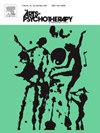art - up:艺术治疗教学、实践和研究中视觉思维策略的案例
IF 1.5
3区 心理学
Q3 PSYCHOLOGY, CLINICAL
引用次数: 0
摘要
视觉思维策略(VTS)是一种艺术教育技术,通常用于提高观察和批判性思维能力。由于视觉图像的使用也是艺术治疗的基础,因此将VTS整合到艺术治疗中可以促进临床卓越,并培养跨不同环境的跨专业合作。VTS可以通过帮助受训者和从业者提高关键的治疗技能,如接受、反思、思考、理解和存在(ART-UP),来支持专业学习。本文通过两个小插图介绍了作者作为艺术治疗师、研究人员和教育工作者在艺术治疗教学、医学研究和博物馆设置中利用VTS的经验。第一个小插曲描述了在床边使用VTS对烧伤患者进行艺术治疗,通过艺术观看促进艺术参与,并促进康复期间的社会心理目标。第二个小插图详细介绍了一个为有记忆问题的个人和他们的护理伙伴设计的博物馆艺术治疗项目。根据这些小插曲和已发表的文献,第三部分描述了VTS在培养艺术治疗受训者观察技能、加强诊断评估、识别内隐偏见、扩大艺术治疗干预以包括观察和讨论艺术作品方面的应用。批判性反思包括讨论VTS可以在艺术治疗中建立桥梁的方式。基于VTS协议的跨专业合作可以鼓励在不同环境中观察和发现艺术品的意义时进行移情对话。本文章由计算机程序翻译,如有差异,请以英文原文为准。
ART-UP: Making the case for visual thinking strategies in art therapy pedagogy, practice, and research
Visual Thinking Strategies (VTS) is an art-education technique commonly used to enhance observation and critical thinking skills. Since the use of visual imagery is also the foundation of art therapy, integrating VTS in art therapy can foster clinical excellence and cultivate interprofessional collaboration across diverse settings. VTS can support professional learning by helping trainees and practitioners enhance key therapeutic skills such as Acceptance, Reflexivity, Thinking, Understanding, and Presence (ART-UP). This paper presents the authors’ experiences as art therapists, researchers, and educators in utilizing VTS in art therapy teaching, medical research, and museum settings, illustrated through two vignettes. The first vignette describes using VTS in art therapy with burn patients at the bedside to foster art engagement via art viewing and facilitate psychosocial goals during recovery. The second vignette details a museum art therapy program designed for individuals with memory concerns and their care partners. Drawing from these vignettes and published literature, a third section describes the application of VTS to cultivate art therapy trainee’s observation skills, enhance diagnostic assessments, recognize implicit biases, and broaden art therapy intervention to include observation and discussion of art works. Critical reflections are included to discuss the ways in which VTS can build bridges in art therapy. Interprofessional collaborations based on VTS protocol can encourage empathic dialogue when looking at and discovering the meaning of artwork in diverse settings.
求助全文
通过发布文献求助,成功后即可免费获取论文全文。
去求助
来源期刊

Arts in Psychotherapy
Multiple-
CiteScore
3.20
自引率
11.10%
发文量
66
期刊介绍:
The Arts in Psychotherapy is a dynamic, contemporary journal publishing evidence-based research, expert opinion, theoretical positions, and case material on a wide range of topics intersecting the fields of mental health and creative arts therapies. It is an international peer-reviewed journal publishing 5 issues annually. Papers are welcomed from researchers and practitioners in the fields of art, dance/movement, drama, music, and poetry psychotherapy, as well as expressive and creative arts therapy, neuroscience, psychiatry, education, allied health, and psychology that aim to engage high level theoretical concepts with the rigor of professional practice. The journal welcomes contributions that present new and emergent knowledge about the role of the arts in healthcare, and engage a critical discourse relevant to an international readership that can inform the development of new services and the refinement of existing policies and practices. There is no restriction on research methods and review papers are welcome. From time to time the journal publishes special issues on topics warranting a distinctive focus relevant to the stated goals and scope of the publication.
 求助内容:
求助内容: 应助结果提醒方式:
应助结果提醒方式:


